The main operating station consistes of an Elecraft K3/100, Ameritron AL-82, and a PalStar 2000 tuner.
The second station consists of an Elecraft K2/100 and a KAT100 Tuner,
The third station consists of a Knight T-50 and V44 for a transmitter/VFO and a Drake 2B receiver.
The station is located in a 16 x 13 "workshop" area built on the back of the
garage in 1994. (I did the work and it is not professional, but fairly
inexpensive.) The shack has baseboard electric heat and a window air
conditioner built in the wall. I have a workbench where I
build kits and circuits and do general electronics tom-foolery. I
have a Scope, RF Generator, several Frequency Counters, DMM, and
assorted meters and gadgets.
I like CW the most and love CW contesting. I like RTTY
contesting as well as rag chewing and I do pick up the microphone and
talk. I am not a two meter FM enthusiast, but have a couple of mobile
rigs somewhere.
The Elecraft K3 landed in Newton in March of 2008 and
took me about 3 days to complete. The radio has lived up to my expectations. The radio is great on CW and SSB is very good also It
works fine with RTTY and the filtering is wonderful for that mode. I
have done many software upgrades that have gone very well. I have
a 2.8 Khz and a 500 Hz roofing filter.
The radio is everyting that one reads about. I have used
the K3 in many contests and it has done very well. For the money,
it is a very fine radio with excellent customer service from Elecraft.
The radio is great on CW and SSB is very good also It
works fine with RTTY and the filtering is wonderful for that mode. I
have done many software upgrades that have gone very well. I have
a 2.8 Khz and a 500 Hz roofing filter.
The radio is everyting that one reads about. I have used
the K3 in many contests and it has done very well. For the money,
it is a very fine radio with excellent customer service from Elecraft.
I researched amplifiers for quite some time before I decided to get the Ameritron AL-82. 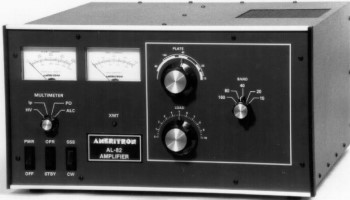 It is a basic amplifier but it is different than most 3-500z amps. It
really uses the tubes to their full capacity. Tubes are
relatively cheap compaired to others and the way the designer built the
amp allows, in my opinion, for long life. The designer used a
presurrize plenum and the actual glass chimnies in the design.
The power supply is very stiff using 240 volt mains. The
AL-82 replaced a AL-80A which I liked a lot. I am sure that there
are flaws in this amp, but it sure gets up and talks. It can put
out the power and uses the tubes as they should be used. I picked
this up used from a retired ham in Dallas. It is a basic amplifier but it is different than most 3-500z amps. It
really uses the tubes to their full capacity. Tubes are
relatively cheap compaired to others and the way the designer built the
amp allows, in my opinion, for long life. The designer used a
presurrize plenum and the actual glass chimnies in the design.
The power supply is very stiff using 240 volt mains. The
AL-82 replaced a AL-80A which I liked a lot. I am sure that there
are flaws in this amp, but it sure gets up and talks. It can put
out the power and uses the tubes as they should be used. I picked
this up used from a retired ham in Dallas. Well,
not every antenna can be built to every frequency I want to operate on.
I like CW, RTTY and SSB, so I operate from low to 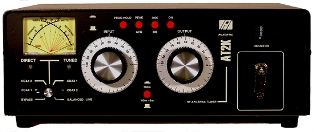 high in the bands. So, I have had tuners before of various ilks (including a homebrew tuner which I
still have), but none that could reach 160 very well. Enter the
Palstar AT2K. I had Palstar's 1500 version of the same tuner, but
it had trouble going to 160 meters. I run an Slumping Inverted-L
with 16 radials and match it with the tuner. It is not the most
ideal antenna and needs a little help with the tuner. I also use
it on other bands to keep everything happy in the shack. high in the bands. So, I have had tuners before of various ilks (including a homebrew tuner which I
still have), but none that could reach 160 very well. Enter the
Palstar AT2K. I had Palstar's 1500 version of the same tuner, but
it had trouble going to 160 meters. I run an Slumping Inverted-L
with 16 radials and match it with the tuner. It is not the most
ideal antenna and needs a little help with the tuner. I also use
it on other bands to keep everything happy in the shack. 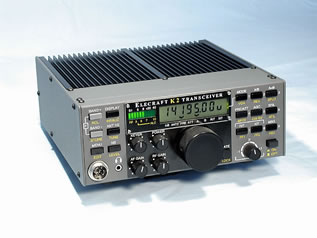 The Elecraft K2/100 is loaded up with about everything except the audio DSP board. The kit took more more than a month to build but I took my time. It worked the first time too. I was bored
with ham radio and the K2 increased by interest in ham radio and I got
back into building. My experience with the K2 was augmented by
the use of the Elecraft reflector and the friends I have made
throughout the world. You cannot get any better customer service
anywhere. The K2 is not a play radio. It is a serious radio
which has stood the test of time. I have used mine for The Elecraft K2/100 is loaded up with about everything except the audio DSP board. The kit took more more than a month to build but I took my time. It worked the first time too. I was bored
with ham radio and the K2 increased by interest in ham radio and I got
back into building. My experience with the K2 was augmented by
the use of the Elecraft reflector and the friends I have made
throughout the world. You cannot get any better customer service
anywhere. The K2 is not a play radio. It is a serious radio
which has stood the test of time. I have used mine for 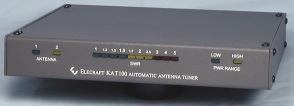 contests and Field Day. I have pounded on the rig in many contests and
it has not let me down. The K2 is easy to fix and help is just an
email away...not only from Elecraft...but from many other hams who love
the K2. The KAT100 is a very good tuner which is an LC match
circuit and can match Hi-Z to Low-Z. The algorithm that runs the
tuner is very fast and gets a match in seconds. contests and Field Day. I have pounded on the rig in many contests and
it has not let me down. The K2 is easy to fix and help is just an
email away...not only from Elecraft...but from many other hams who love
the K2. The KAT100 is a very good tuner which is an LC match
circuit and can match Hi-Z to Low-Z. The algorithm that runs the
tuner is very fast and gets a match in seconds.
I started looking at boatanchor equipment and marvelled how this equipment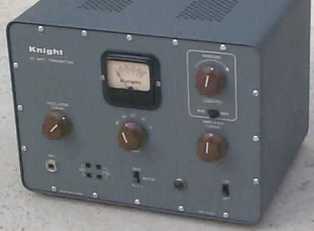 was put together and restored. So, I started getting into was put together and restored. So, I started getting into 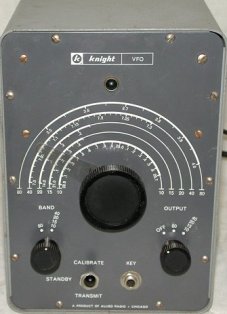 the
game. I first got an Hammarlund HQ-110 that was great
condition. I then started looking for a transmitter but I wanted
something rather unusual or for lack of a better word, "cool.". I
chose the Knight T-50. It uses an 6AG7/807 tube combination.
A classic combination in the 50s and 60s until designers started
using the 6146 and the sweep tubes. The Knight T-50 is not
unusual in the technology but it is fairly rare. I also found the
V44 VFO for the unit. I then found a Drake 2B for a good price on
EBay
and snatched it up. The 2B is a very good receiver. the
game. I first got an Hammarlund HQ-110 that was great
condition. I then started looking for a transmitter but I wanted
something rather unusual or for lack of a better word, "cool.". I
chose the Knight T-50. It uses an 6AG7/807 tube combination.
A classic combination in the 50s and 60s until designers started
using the 6146 and the sweep tubes. The Knight T-50 is not
unusual in the technology but it is fairly rare. I also found the
V44 VFO for the unit. I then found a Drake 2B for a good price on
EBay
and snatched it up. The 2B is a very good receiver. 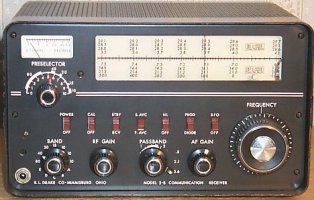 The
Drake has excellent receive on 80, 40, and 20. I am amazed at the
technology used with the 2B - the use of bandpass tuning and various
filters, all with 60s technology. I also got the 2AQ speaker with
the Q-Multiplier. I
also found a crystal calibrator for sale. The 2B is in need of
some work as is the T-50 and the VFO. But working and restoring
boatanchors is what is fun. I do plan to operate the station once
it is all in place. So, if you hear me on the air, I might be
working
one of my stations. I hope to do an update on these rigs as I
restore them and use them on the air. My plan is to use them on
the air regularly for CW rag chews and maybe a contest.. The
Drake has excellent receive on 80, 40, and 20. I am amazed at the
technology used with the 2B - the use of bandpass tuning and various
filters, all with 60s technology. I also got the 2AQ speaker with
the Q-Multiplier. I
also found a crystal calibrator for sale. The 2B is in need of
some work as is the T-50 and the VFO. But working and restoring
boatanchors is what is fun. I do plan to operate the station once
it is all in place. So, if you hear me on the air, I might be
working
one of my stations. I hope to do an update on these rigs as I
restore them and use them on the air. My plan is to use them on
the air regularly for CW rag chews and maybe a contest.. You
might hear me on the air and I might not be at my station. I like
contesting and from time-to-time, you will hear me from another station. Of course I have some equipment that has been retired
and just sitting around.
|
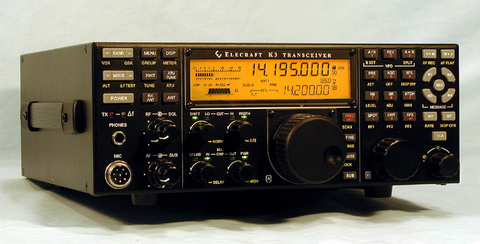
 The radio is great on CW and SSB is very good also It
works fine with RTTY and the filtering is wonderful for that mode. I
have done many software upgrades that have gone very well. I have
a 2.8 Khz and a 500 Hz roofing filter.
The radio is everyting that one reads about. I have used
the K3 in many contests and it has done very well. For the money,
it is a very fine radio with excellent customer service from Elecraft.
The radio is great on CW and SSB is very good also It
works fine with RTTY and the filtering is wonderful for that mode. I
have done many software upgrades that have gone very well. I have
a 2.8 Khz and a 500 Hz roofing filter.
The radio is everyting that one reads about. I have used
the K3 in many contests and it has done very well. For the money,
it is a very fine radio with excellent customer service from Elecraft.
 It is a basic amplifier but it is different than most 3-500z amps. It
really uses the tubes to their full capacity. Tubes are
relatively cheap compaired to others and the way the designer built the
amp allows, in my opinion, for long life. The designer used a
presurrize plenum and the actual glass chimnies in the design.
The power supply is very stiff using 240 volt mains. The
AL-82 replaced a AL-80A which I liked a lot. I am sure that there
are flaws in this amp, but it sure gets up and talks. It can put
out the power and uses the tubes as they should be used. I picked
this up used from a retired ham in Dallas.
It is a basic amplifier but it is different than most 3-500z amps. It
really uses the tubes to their full capacity. Tubes are
relatively cheap compaired to others and the way the designer built the
amp allows, in my opinion, for long life. The designer used a
presurrize plenum and the actual glass chimnies in the design.
The power supply is very stiff using 240 volt mains. The
AL-82 replaced a AL-80A which I liked a lot. I am sure that there
are flaws in this amp, but it sure gets up and talks. It can put
out the power and uses the tubes as they should be used. I picked
this up used from a retired ham in Dallas. high in the bands. So, I have had tuners before of various ilks (including a homebrew tuner which I
still have), but none that could reach 160 very well. Enter the
Palstar AT2K. I had Palstar's 1500 version of the same tuner, but
it had trouble going to 160 meters. I run an Slumping Inverted-L
with 16 radials and match it with the tuner. It is not the most
ideal antenna and needs a little help with the tuner. I also use
it on other bands to keep everything happy in the shack.
high in the bands. So, I have had tuners before of various ilks (including a homebrew tuner which I
still have), but none that could reach 160 very well. Enter the
Palstar AT2K. I had Palstar's 1500 version of the same tuner, but
it had trouble going to 160 meters. I run an Slumping Inverted-L
with 16 radials and match it with the tuner. It is not the most
ideal antenna and needs a little help with the tuner. I also use
it on other bands to keep everything happy in the shack. The Elecraft K2/100 is loaded up with about everything except the audio DSP board. The kit took more more than a month to build but I took my time. It worked the first time too. I was bored
with ham radio and the K2 increased by interest in ham radio and I got
back into building. My experience with the K2 was augmented by
the use of the Elecraft reflector and the friends I have made
throughout the world. You cannot get any better customer service
anywhere. The K2 is not a play radio. It is a serious radio
which has stood the test of time. I have used mine for
The Elecraft K2/100 is loaded up with about everything except the audio DSP board. The kit took more more than a month to build but I took my time. It worked the first time too. I was bored
with ham radio and the K2 increased by interest in ham radio and I got
back into building. My experience with the K2 was augmented by
the use of the Elecraft reflector and the friends I have made
throughout the world. You cannot get any better customer service
anywhere. The K2 is not a play radio. It is a serious radio
which has stood the test of time. I have used mine for  contests and Field Day. I have pounded on the rig in many contests and
it has not let me down. The K2 is easy to fix and help is just an
email away...not only from Elecraft...but from many other hams who love
the K2. The KAT100 is a very good tuner which is an LC match
circuit and can match Hi-Z to Low-Z. The algorithm that runs the
tuner is very fast and gets a match in seconds.
contests and Field Day. I have pounded on the rig in many contests and
it has not let me down. The K2 is easy to fix and help is just an
email away...not only from Elecraft...but from many other hams who love
the K2. The KAT100 is a very good tuner which is an LC match
circuit and can match Hi-Z to Low-Z. The algorithm that runs the
tuner is very fast and gets a match in seconds. was put together and restored. So, I started getting into
was put together and restored. So, I started getting into  the
game. I first got an Hammarlund HQ-110 that was great
condition. I then started looking for a transmitter but I wanted
something rather unusual or for lack of a better word, "cool.". I
chose the Knight T-50. It uses an 6AG7/807 tube combination.
A classic combination in the 50s and 60s until designers started
using the 6146 and the sweep tubes. The Knight T-50 is not
unusual in the technology but it is fairly rare. I also found the
V44 VFO for the unit. I then found a Drake 2B for a good price on
EBay
and snatched it up. The 2B is a very good receiver.
the
game. I first got an Hammarlund HQ-110 that was great
condition. I then started looking for a transmitter but I wanted
something rather unusual or for lack of a better word, "cool.". I
chose the Knight T-50. It uses an 6AG7/807 tube combination.
A classic combination in the 50s and 60s until designers started
using the 6146 and the sweep tubes. The Knight T-50 is not
unusual in the technology but it is fairly rare. I also found the
V44 VFO for the unit. I then found a Drake 2B for a good price on
EBay
and snatched it up. The 2B is a very good receiver.  The
Drake has excellent receive on 80, 40, and 20. I am amazed at the
technology used with the 2B - the use of bandpass tuning and various
filters, all with 60s technology. I also got the 2AQ speaker with
the Q-Multiplier. I
also found a crystal calibrator for sale. The 2B is in need of
some work as is the T-50 and the VFO. But working and restoring
boatanchors is what is fun. I do plan to operate the station once
it is all in place. So, if you hear me on the air, I might be
working
one of my stations. I hope to do an update on these rigs as I
restore them and use them on the air. My plan is to use them on
the air regularly for CW rag chews and maybe a contest..
The
Drake has excellent receive on 80, 40, and 20. I am amazed at the
technology used with the 2B - the use of bandpass tuning and various
filters, all with 60s technology. I also got the 2AQ speaker with
the Q-Multiplier. I
also found a crystal calibrator for sale. The 2B is in need of
some work as is the T-50 and the VFO. But working and restoring
boatanchors is what is fun. I do plan to operate the station once
it is all in place. So, if you hear me on the air, I might be
working
one of my stations. I hope to do an update on these rigs as I
restore them and use them on the air. My plan is to use them on
the air regularly for CW rag chews and maybe a contest..